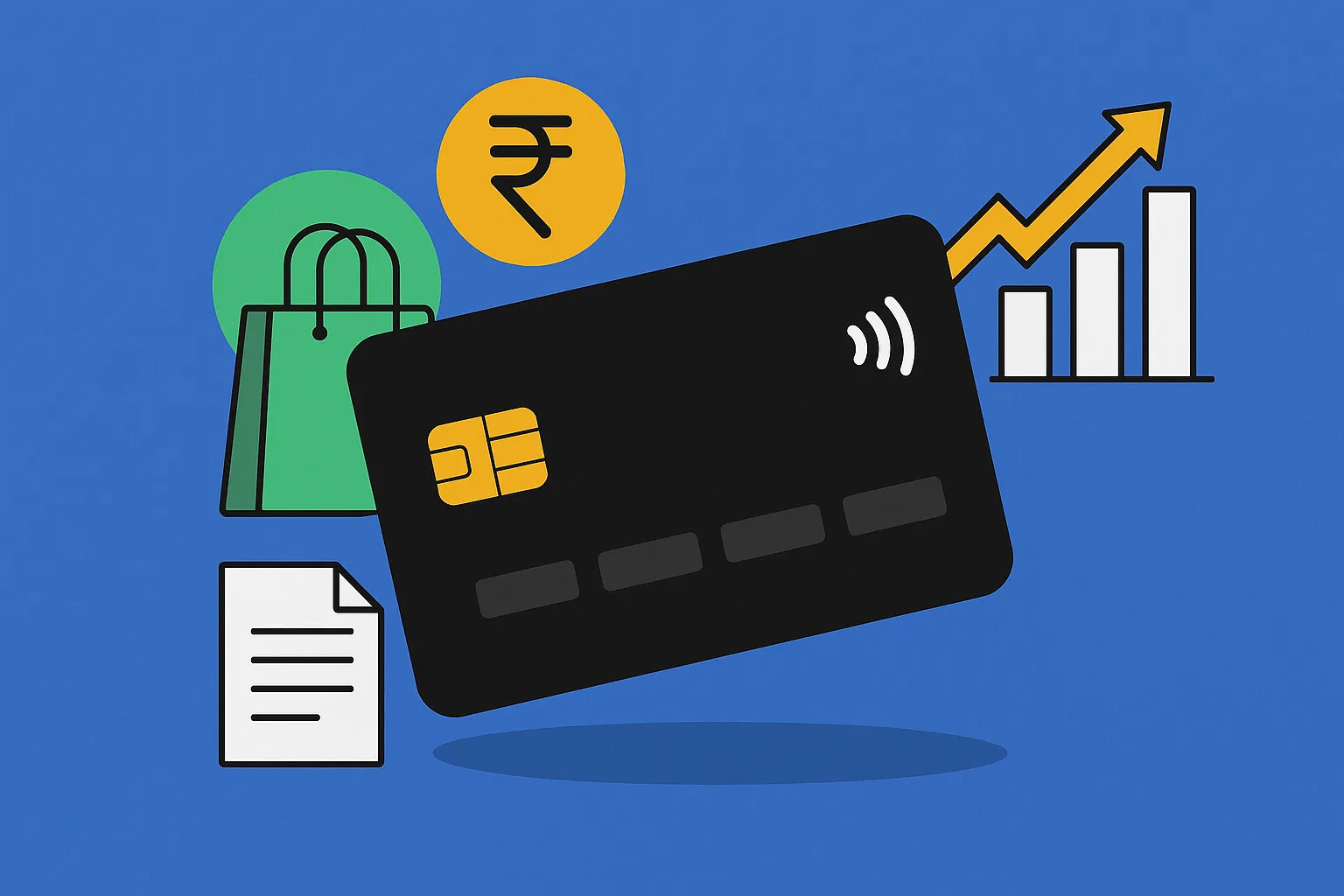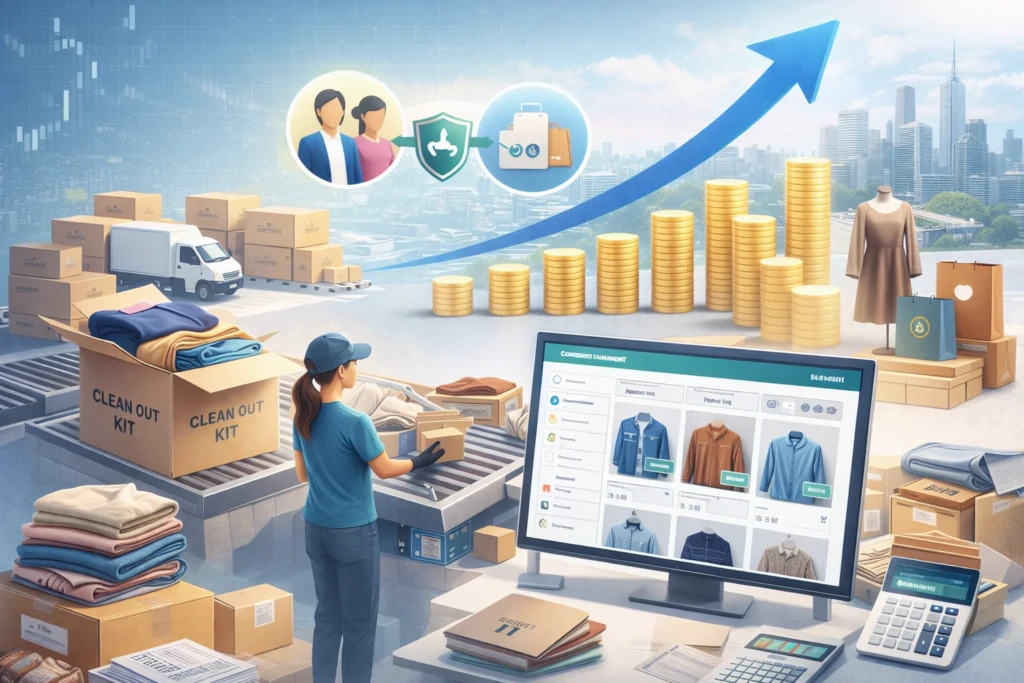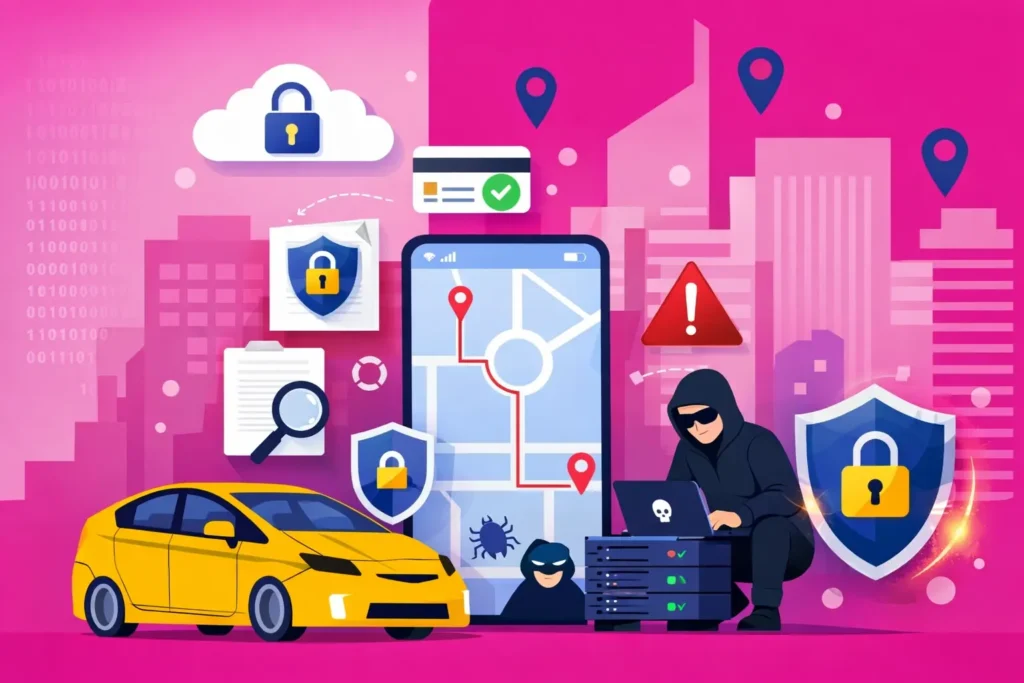OneCard has rapidly become one of India’s most talked-about credit card startups. Launched by FPL Technologies, it offers a mobile-first, no-frills credit experience aimed squarely at digitally savvy consumers.
Understanding the business model of OneCard is essential for any founder interested in fintech, credit innovation, or embedded finance. Unlike traditional credit cards issued by big banks, OneCard relies on a lightweight app-driven approach, strategic partnerships with banks, and smart use of data to drive growth and revenue.
This business model shows how modern fintech startups can disrupt established financial products with technology, design, and customer-centric policies.
What is OneCard & How It Works
OneCard is a metal credit card seamlessly integrated with a sleek, feature-rich mobile app that reimagines how consumers access and manage credit. Unlike traditional cards that often feel outdated or complex, OneCard is designed to be clear, fast, and fully digital from the moment you sign up.
Problem Solved
Traditional credit cards are opaque, hard to track, and packed with hidden fees or confusing rewards programs. OneCard solves this by offering a transparent, app-controlled credit experience with clear cashback, instant controls, and no surprise charges.
Who Uses It
Primarily young professionals, tech-savvy consumers, and urban millennials who want a modern, app-first way to manage credit. This audience expects intuitive tools, real-time insights, and flexible repayment options.
How It’s work Operates
OneCard partners with regulated banks such as IDFC FIRST Bank, Federal Bank, and SBM Bank to issue co-branded credit cards, while FPL Technologies provides the technology backbone.
The app acts as a command center where users can:
- Instantly Activate or Deactivate Their Card
Turn your card on or off with a tap, adding an extra layer of security. - Set Spending Limits
Control how much you or authorized users can spend each month. - Convert Purchases Into EMIs Instantly
Choose flexible repayment plans right from your phone without paperwork. - View and Redeem Rewards in Real Time
Instantly see cashback and reward points and redeem them as you shop. - Manage Transactions Without Customer Service
No need to call helplines—disputes, statements, and settings are all handled through the app. - Tap-to-Pay Enablement
Use NFC-enabled smartphones or wearables for secure, contactless payments. - Dynamic Credit Limits
The system automatically reviews your repayment behavior to adjust your credit limit over time. - Virtual Card Issuance
Get a virtual card immediately after approval, so you can start spending before your metal card arrives.
This combination of trusted banking partnerships, modern credit controls, and digital-first onboarding makes OneCard stand out as one of India’s most innovative credit solutions.
Read More : What is OneCart App and How Does It Work?
OneCard targets young digital professionals.
OneCard’s business model is laser-focused on a clear set of customer segments. Understanding who they target helps explain why their strategy works.
Here’s a snapshot of OneCard’s primary users:
- Urban Millennials & Gen Z
Digital natives who expect a smooth, app-based experience for everything, including credit. - Young Professionals
Salaried individuals aged 23–35 who are early in their credit journey and want to build a credit score without hassle. - Tech-Savvy Shoppers
Consumers who prefer online shopping and value instant transaction notifications and controls. - Credit-First Consumers
People who don’t want to rely on debit cards or cash and prefer using credit for rewards, EMI conversions, and flexibility. - Value Seekers
Customers drawn to transparent fees, no annual charges (for active users), and clear cashback or rewards.
By focusing on this audience, OneCard has created a product that feels modern, accessible, and trustworthy—unlike legacy credit products that often feel complicated or intimidating.
Features That Support the Business Model
OneCard’s revenue strategy is built around features that attract, engage, and retain users while driving transaction volume. Here are the core features fueling its success:
- Instant Virtual Card Issuance
- Users get a virtual card immediately after approval, ready to use for online purchases.
- This drives faster onboarding and early transaction revenue.
- Users get a virtual card immediately after approval, ready to use for online purchases.
- Metal Physical Card
- A premium metal card that appeals to status-conscious users and differentiates the product.
- A premium metal card that appeals to status-conscious users and differentiates the product.
- Real-Time Spend Insights
- Detailed transaction categorization and spend tracking build trust and encourage responsible usage.
- Detailed transaction categorization and spend tracking build trust and encourage responsible usage.
- EMI Conversion with One Tap
- Users can split purchases into EMIs directly in the app, generating interest revenue streams.
- Users can split purchases into EMIs directly in the app, generating interest revenue streams.
- Customizable Controls
- Toggle international usage, set limits, or freeze the card instantly, reducing fraud and improving customer satisfaction.
- Toggle international usage, set limits, or freeze the card instantly, reducing fraud and improving customer satisfaction.
- Rewards & Cashback
- Transparent reward points redeemable instantly, incentivizing higher card usage.
- Transparent reward points redeemable instantly, incentivizing higher card usage.
- No Joining or Annual Fees (Conditional)
- Keeps acquisition friction low while ensuring revenue through interchange fees and EMI interest.
Read More : Onecart Features Breakdown for Startup Founders
Revenue Streams of OneCard
OneCard uses a combination of fintech innovation and classic credit card economics to generate revenue. Unlike traditional banks that depend heavily on interest charges and fees, OneCard emphasizes transparency and usage-based income.
Below is a clear table summarizing each revenue stream:
| Revenue Stream | How It Works |
| Interchange Fees | Earned on every transaction processed via OneCard. |
| EMI Conversion Interest | Interest charged when users convert purchases into EMIs. |
| Late Payment Fees | Applied when users miss payment deadlines. |
| Interest on Revolving Credit | Earned when customers carry forward balances month to month. |
| Partner Commissions | Revenue from merchants and brands offering rewards and offers. |
| Cross-Selling | Income from promoting partner financial products or services. |
Let’s break these down a bit further:
- Interchange Fees:
Whenever a user swipes or taps the card, the merchant pays a small fee, part of which goes to OneCard. - EMI Interest:
OneCard offers easy EMI options. Users pay interest over time, creating predictable income. - Late Fees & Revolving Interest:
If customers don’t clear dues on time, interest and penalties apply—standard in the credit card business model. - Partner Commissions:
Brands pay to be featured in the app’s offers and reward sections, creating ancillary revenue. - Cross-Selling:
The app occasionally promotes other bank products or credit instruments, sharing revenue on conversions.
Cost Structure of Running OneCard
Running a credit card platform like OneCard requires a mix of technology investment, financial risk management, and customer acquisition spending. Here are the main expenses:
- Technology & Infrastructure
- App development and maintenance
- Cloud hosting and data security
- API integrations with banking partners and payment networks
- App development and maintenance
- Customer Support & Operations
- 24/7 support teams
- KYC and compliance operations
- Fraud monitoring and risk management
- 24/7 support teams
- Credit Risk & Provisioning
- Costs from customer defaults and non-performing accounts
- Capital reserves required to cover credit losses
- Costs from customer defaults and non-performing accounts
- Card Issuance & Fulfillment
- Manufacturing and shipping the metal physical cards
- Costs of maintaining virtual card issuance systems
- Manufacturing and shipping the metal physical cards
- Marketing & Customer Acquisition
- Paid advertising, referral incentives, and promotions to onboard new users
- Paid advertising, referral incentives, and promotions to onboard new users
- Regulatory Compliance
- Ongoing expenses for legal, auditing, and regulatory adherence
- Ongoing expenses for legal, auditing, and regulatory adherence
Together, these costs mean fintech credit cards like OneCard must maintain high transaction volume and disciplined risk management to stay profitable.
Recent Innovations and Future Updates
OneCard has been actively evolving its offering to stay ahead of competitors and better serve its tech-focused audience. Here are some notable recent innovations and strategic moves:
- Dynamic Credit Limit Adjustments
The app now uses AI-driven credit profiling to adjust limits in near real time based on repayment behavior and spending patterns. This helps maximize usage while managing risk. - Enhanced EMI Options
OneCard expanded EMI conversion for smaller purchases and introduced zero-interest promotional EMIs with select merchants, driving higher transaction volume. - Co-Branded Partnerships Expansion
New collaborations with additional banks and fintechs have increased OneCard’s issuance footprint across India. - Gamified Rewards Interface
In 2024, the app introduced a redesigned rewards section with gamification—badges, milestones, and limited-time offers to boost engagement. - Tap-to-Pay Upgrades
OneCard improved its NFC and tokenization features, enabling more seamless tap payments through wearables and smartphones. - Regulatory Compliance Enhancements
Proactive updates to comply with RBI’s evolving credit card and BNPL regulations, including more transparent disclosures and easier opt-out options.
These innovations highlight how OneCard continues to blend fintech agility with the regulatory discipline needed in India’s credit landscape.
Takeaways for Startup Founders
If you’re a founder considering building a credit card app or a fintech platform, OneCard offers powerful lessons:
- Own the User Experience
OneCard proved that even regulated financial products can feel modern and intuitive if you prioritize design and app-based controls. Your customers expect an experience that feels like any other smart consumer app. - Leverage Bank Partnerships
Instead of applying for a full banking license, OneCard partnered with established banks to issue cards. This model lets you focus on technology and customer acquisition while relying on partners for regulatory infrastructure. - Prioritize Transparency
Clear fees, no hidden charges, and instant notifications build trust and reduce churn. In credit products, transparency is a competitive advantage. - Monetize Responsibly
OneCard balances revenue through interchange, EMIs, and cross-selling without relying solely on late fees. A diversified revenue mix ensures sustainability. - Invest in Risk Management Early
Credit is inherently risky. Building robust fraud detection and credit scoring systems from day one is non-negotiable.
At Miracuves, we help founders launch fintech solutions with pre-built, customizable clones that save months of development time. If you’re inspired by OneCard’s model, we can help you build a credit card app with smart controls, EMI options, and modern UX—ready to scale.
Conclusion :
The business model of OneCard demonstrates how a fresh approach can transform a legacy financial product. By combining sleek app experiences, transparent pricing, and smart partnerships, OneCard has built a credit platform loved by India’s new generation of consumers.
If you’re a startup founder inspired to launch your own credit card or fintech app, Miracuves can help you get there faster. Our ready-made fintech app and OneCard-style solutions are customizable to fit your unique business vision.
Ready to build the next big thing in fintech?
Let’s turn your idea into a live product—faster, better, and with confidence.
Contact Miracuves Today to get started.
FAQs :
1. How does OneCard make money if there are no annual fees?
OneCard primarily earns through interchange fees on every transaction, interest from EMI conversions and revolving balances, and partner commissions from featured offers.
2. Is OneCard a bank or a fintech company?
OneCard itself is a fintech platform created by FPL Technologies. It is not a bank. Instead, it partners with licensed banks in India (like IDFC FIRST Bank and Federal Bank) to issue credit cards while providing the app-based experience and customer interface.
3. What makes OneCard different from traditional credit cards?
It offers instant virtual issuance, transparent rewards, no hidden fees, and full app-based spending controls—all packed in a premium metal card.
4. How does OneCard manage credit risk?
OneCard uses proprietary credit scoring, behavioral analytics, and dynamic limit adjustments to manage risk. It also relies on its banking partners’ underwriting capabilities to reduce exposure to defaults.
5. Can startups build an app like OneCard?
Yes—if you partner with experienced fintech developers like Miracuves. We offer ready-made credit card app and fintech solutions that can be tailored to your business model, helping you save time and avoid common pitfalls.
Related Articles :








